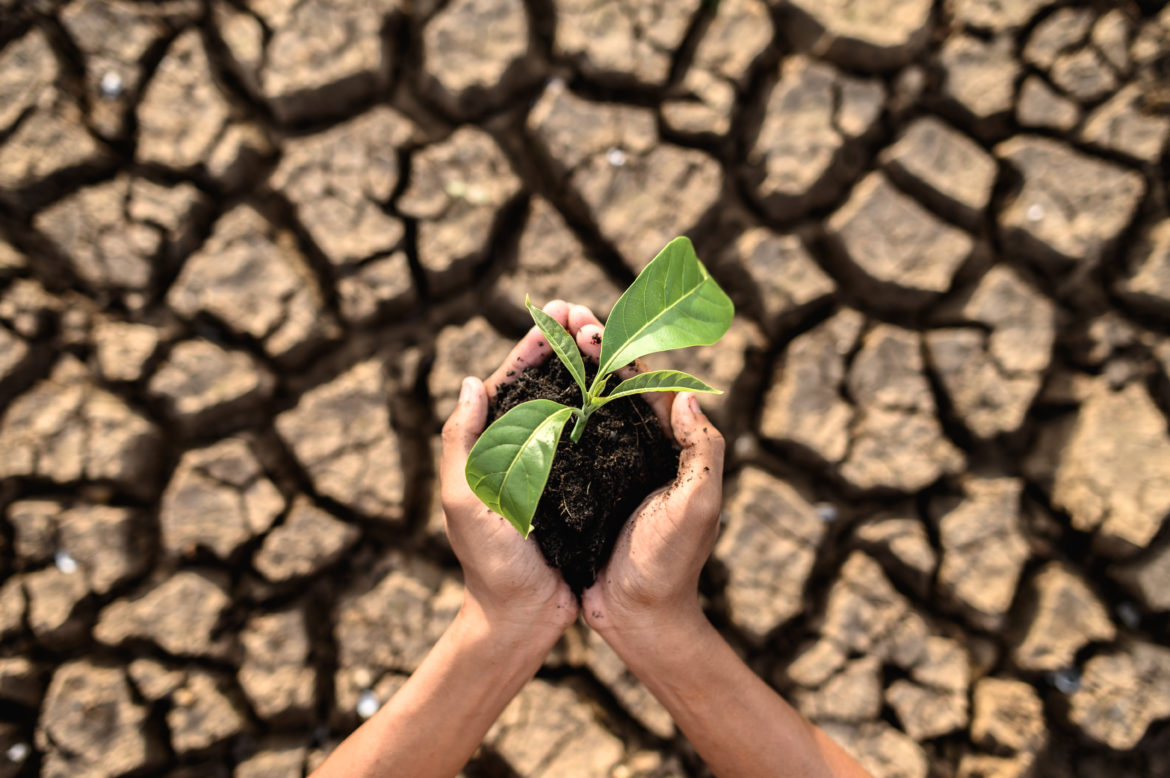Introduction
The United Kingdom is home to a wide range of agricultural ecosystems, from the rolling hills of the Lake District to the fertile plains of East Anglia. These farms play a vital role in providing food and jobs for the nation, but they are also facing a number of challenges, including climate change, Brexit, and the rising cost of living.
One of the most important challenges facing UK farms is the decline in biodiversity. Biodiversity is the variety of life on Earth, and it is essential for the functioning of healthy ecosystems. Farms with high levels of biodiversity are more resilient to pests and diseases, and they produce more nutritious food.
The Role of UK Farms
UK farms play a significant role in supporting biodiversity and maintaining ecosystem health. Farms cover around 70% of the UK’s land area, and they provide a variety of habitats for wildlife, including birds, bats, insects, and mammals. Farms also help to regulate the water cycle, prevent soil erosion, and improve air quality.
Here are some specific ways that UK farms support biodiversity and maintain ecosystem health:
- Provide habitat for a variety of wildlife: UK farms provide habitat for a wide range of wildlife, including birds, bats, insects, and mammals. Hedgerows, trees, and wetlands on farms provide food and shelter for a variety of species.
- Regulate the water cycle: Farms help to regulate the water cycle by absorbing rainwater and releasing it slowly into rivers and streams. This helps to prevent flooding and droughts.
- Prevent soil erosion: Farms help to prevent soil erosion by planting crops that hold the soil in place. This helps to maintain healthy soils and improve water quality.
- Improve air quality: Farms help to improve air quality by absorbing carbon dioxide from the atmosphere. Plants and trees on farms also help to filter pollutants from the air.
In addition to these general benefits, UK farms are also taking a number of specific steps to support biodiversity and maintain ecosystem health. These include:
- Planting hedgerows and trees: Hedgerows and trees provide habitat for a variety of wildlife, including birds, bats, and insects. They also help to reduce soil erosion and wind speed.
- Creating wetlands: Wetlands provide habitat for a variety of wildlife, including birds, amphibians, and reptiles. They also help to filter water and prevent flooding.
- Using cover crops: Cover crops are plants that are grown to cover the soil between crops of food. Cover crops help to improve soil health, reduce water pollution, and suppress weeds.
- Reducing tillage: Tillage is the process of turning the soil. Reducing tillage helps to preserve soil structure and protect soil organisms.
- Using integrated pest management (IPM): IPM is a comprehensive approach to pest control that uses a variety of methods, such as biological control and cultural practices, to reduce the use of pesticides.
By taking these steps, UK farms are helping to ensure that the UK’s countryside remains healthy and biodiverse for future generations.
Here are some specific examples of how UK farms are supporting biodiversity and maintaining ecosystem health:
- Church Farm, Lincolnshire: Church Farm has planted hedgerows, trees, and wetlands on its land. The farm also uses cover crops and reduced tillage to improve soil health. As a result of these measures, the farm has a wide range of wildlife, including birds, bats, and insects.
- Little Massingham Farms, Norfolk: Little Massingham Farms has created a number of wildlife habitats on its land, including hedgerows, trees, and ponds. The farm also uses cover crops and reduced tillage to improve soil health. As a result of these measures, the farm has a wide range of wildlife, including birds, mammals, and insects.
- Waitrose Leckford Estate, Hampshire: Waitrose Leckford Estate is a mixed farm that produces a variety of crops and livestock. The farm has planted hedgerows, trees, and wetlands on its land. The farm also uses cover crops and reduced tillage to improve soil health. As a result of these measures, the farm has a wide range of wildlife, including birds, mammals, and insects.
These are just a few examples of the many UK farms that are supporting biodiversity and maintaining ecosystem health. By taking these steps, UK farmers are helping to protect the environment and ensure the long-term viability of their businesses.
Biodiversity on Farmland
UK farms are home to a wide variety of biodiversity, including flora, fauna, and microorganisms.
Flora
The flora of UK farms includes a wide range of plants, from crops and weeds to trees and hedgerows. Some of the most common plants found on UK farms include:
- Crops: wheat, barley, oats, oilseed rape, potatoes, sugar beet, vegetables, and fruit
- Weeds: chickweed, knotweed, docks, nettles, and thistles
- Trees: oak, ash, birch, willow, and hawthorn
- Hedgerows: hawthorn, blackthorn, hazel, and elder
Fauna
The fauna of UK farms includes a wide range of animals, from birds and mammals to insects and amphibians. Some of the most common animals found on UK farms include:
- Birds: skylark, yellowhammer, chaffinch, linnet, and lapwing
- Mammals: rabbit, hare, brown rat, wood mouse, and hedgehog
- Insects: butterflies, moths, bees, beetles, and flies
- Amphibians: frogs, toads, and newts
Microorganisms
The soil of UK farms is teeming with microorganisms, including bacteria, fungi, and protozoa. These microorganisms play an essential role in breaking down organic matter and releasing nutrients into the soil. They also help to control pests and diseases.
The importance of biodiversity on UK farms
Biodiversity is important for UK farms for a number of reasons. First, it helps to control pests and diseases. Predators, such as hawks and owls, help to keep populations of pests, such as mice and rats, under control. Parasitoids are insects that lay their eggs in the larvae of other insects. When the eggs hatch, the larvae of the parasitoids eat the larvae of the host insect. This helps to control populations of pests, such as aphids and caterpillars.
Second, biodiversity helps to improve soil health. Soil is teeming with life, including bacteria, fungi, and worms. These organisms help to break down organic matter and release nutrients into the soil. This makes the soil more fertile and productive.
Third, biodiversity helps to improve water quality. Plants and trees help to filter runoff from farms, preventing it from polluting rivers and streams. Wetlands also play an important role in filtering water and preventing flooding.
How UK farms are supporting biodiversity
UK farms are taking a number of steps to support biodiversity. These include:
- Planting hedgerows and trees: Hedgerows and trees provide habitat for a variety of wildlife, including birds, bats, and insects. They also help to reduce soil erosion and wind speed.
- Creating wetlands: Wetlands provide habitat for a variety of wildlife, including birds, amphibians, and reptiles. They also help to filter water and prevent flooding.
- Using cover crops: Cover crops are plants that are grown to cover the soil between crops of food. Cover crops help to improve soil health, reduce water pollution, and suppress weeds.
- Reducing tillage: Tillage is the process of turning the soil. Reducing tillage helps to preserve soil structure and protect soil organisms.
- Using integrated pest management (IPM): IPM is a comprehensive approach to pest control that uses a variety of methods, such as biological control and cultural practices, to reduce the use of pesticides.
By taking these steps, UK farms are helping to ensure that the UK’s countryside remains healthy and biodiverse for future generations.
Ecosystem Services
Biodiversity on farms contributes to ecosystem services such as pollination, pest control, and nutrient cycling in a number of ways.
Pollination
Pollination is the process by which pollen is transferred from the male part of a flower to the female part of a flower. This is necessary for the plant to produce fruit and seed. Pollination is carried out by a variety of insects, including bees, butterflies, and moths.
The diversity of insects on farms is essential for pollination. Different insects are attracted to different types of flowers, and they pollinate at different times of the day and year. By having a variety of insects on their farms, farmers can help to ensure that their crops are pollinated effectively.
Pest control
Pests can cause significant damage to crop and livestock. Biodiversity on farms can help to control pests in a number of ways.
First, predators, such as hawks and owls, help to keep populations of pests, such as mice and rats, under control.
Second, parasitoids are insects that lay their eggs in the larvae of other insects. When the eggs hatch, the larvae of the parasitoids eat the larvae of the host insect. This helps to control populations of pests, such as aphids and caterpillars.
Third, some plants produce chemicals that repel or kill pests. These plants can be planted around crops to help protect them from pests.
Nutrient cycling
Nutrient cycling is the process by which nutrients are moved throughout an ecosystem. Nutrients are essential for plant growth, and they are also important for the health of animals and humans.
Biodiversity on farms plays a vital role in nutrient cycling. Soil microorganisms, such as bacteria and fungi, break down organic matter and release nutrients into the soil. These nutrients are then taken up by plants, which are then eaten by animals. When the animals die, their bodies decompose, and the nutrients are released back into the soil.
By supporting biodiversity on their farms, farmers can help to ensure that their soils are nutrient-rich and productive.
In addition to these three ecosystem services, biodiversity on farms also contributes to other important ecosystem services, such as water purification, climate regulation, and recreation.
By supporting biodiversity on their farms, farmers are helping to protect the environment and ensure the long-term viability of their businesses.
Threats to Biodiversity
Biodiversity on UK farms faces a number of challenges and threats, including:
- Habitat loss: Habitat loss is one of the biggest threats to biodiversity on UK farms. Hedgerows, trees, and wetlands have been removed from many farms to make way for more productive land. This has reduced the amount of habitat available for wildlife.
- Intensive farming practices: Intensive farming practices, such as the use of pesticides and herbicides, can also harm biodiversity. Pesticides can kill beneficial insects, such as bees and butterflies. Herbicides can kill weeds, which provide food and shelter for a variety of wildlife.
- Climate change: Climate change is also a threat to biodiversity on UK farms. Climate change is causing warmer temperatures and more extreme weather events. This can make it difficult for wildlife to adapt and survive.
Other threats to biodiversity on UK farms include:
- Pollution: Pollution from agricultural runoff and air pollution can also harm biodiversity.
- Invasive species: Invasive species, such as the American mink and the grey squirrel, can also harm biodiversity. Invasive species compete with native wildlife for food and habitat.
These challenges and threats are having a significant impact on biodiversity on UK farms. A number of species have declined in number in recent years, and some species are at risk of extinction.
What can be done to protect biodiversity on UK farms?
There are a number of things that can be done to protect biodiversity on UK farms. These include:
- Protecting and restoring habitats: Hedgerows, trees, and wetlands should be protected and restored to provide habitat for wildlife.
- Reducing the use of pesticides and herbicides: Farmers should reduce the use of pesticides and herbicides to protect beneficial insects and weeds.
- Adapting to climate change: Farmers should adapt to climate change by planting drought-tolerant crops and using irrigation systems.
- Reducing pollution: Farmers should reduce pollution by using sustainable farming practices, such as managing manure carefully and using cover crops.
- Controlling invasive species: Invasive species should be controlled to protect native wildlife.
The UK government is also taking steps to protect biodiversity on UK farms. The government has introduced a number of schemes that provide financial support to farmers who adopt sustainable farming practices. The government is also working to reduce pollution and control invasive species.
By taking these steps, we can help to protect biodiversity on UK farms and ensure a healthy and productive future for British agriculture.
Conservation Measures
1
Conservation measures and sustainable farming practices are essential for protecting and enhancing biodiversity on UK farms.
Conservation measures are actions taken to protect and conserve natural resources, such as wildlife and habitats. Sustainable farming practices are agricultural practices that meet the needs of the present without compromising the ability of future generations to meet their own needs.
Conservation measures and sustainable farming practices can help to protect biodiversity on UK farms in a number of ways:
- Providing habitat for wildlife: Conservation measures, such as planting hedgerows and trees, creating wetlands, and managing grasslands sustainably, can provide habitat for a variety of wildlife.
- Reducing pollution: Sustainable farming practices, such as reducing the use of pesticides and herbicides, and managing manure carefully, can help to reduce pollution, which can harm biodiversity.
- Protecting soil health: Sustainable farming practices, such as using cover crops and reducing tillage, can help to protect soil health, which is essential for biodiversity.
- Promoting resilience to climate change: Sustainable farming practices, such as planting drought-tolerant crops and using irrigation systems, can help farms to become more resilient to the impacts of climate change, which can threaten biodiversity.
By implementing conservation measures and sustainable farming practices, UK farms can help to protect and enhance biodiversity, while also producing high-quality food in a sustainable way.
Here are some specific examples of conservation measures and sustainable farming practices that can help to protect and enhance biodiversity on UK farms:
- Planting hedgerows and trees: Hedgerows and trees provide habitat for a variety of wildlife, including birds, bats, and insects. They also help to reduce soil erosion and wind speed.
- Creating wetlands: Wetlands provide habitat for a variety of wildlife, including birds, amphibians, and reptiles. They also help to filter water and prevent flooding.
- Using cover crops: Cover crops are plants that are grown to cover the soil between crops of food. Cover crops help to improve soil health, reduce water pollution, and suppress weeds.
- Reducing tillage: Tillage is the process of turning the soil. Reducing tillage helps to preserve soil structure and protect soil organisms.
- Using integrated pest management (IPM): IPM is a comprehensive approach to pest control that uses a variety of methods, such as biological control and cultural practices, to reduce the use of pesticides.
By implementing these and other conservation measures and sustainable farming practices, UK farms can play a vital role in protecting and enhancing biodiversity.
Policy and Support
The UK government has a number of policies and support programs in place to promote biodiversity conservation on farms. These include:
- Countryside Stewardship: Countryside Stewardship is a scheme that provides financial support to farmers who manage their land in a way that benefits the environment. The scheme includes a number of measures that can help farmers to improve biodiversity, such as planting hedgerows and trees, creating wetlands, and managing grasslands sustainably.
- Environmental Land Management (ELM) schemes: The ELM schemes are a new set of schemes that will replace the Common Agricultural Policy (CAP). The ELM schemes will focus on supporting farmers who provide public goods, such as clean air and water, and healthy soils. Biodiversity is one of the public goods that will be supported under the ELM schemes.
- Sustainable Farming Incentive (SFI): The SFI is a new scheme that will provide financial support to farmers who adopt sustainable farming practices. The SFI will focus on three key areas: improving soil health, reducing water pollution, and increasing biodiversity.
- Farm Advisory Service (FAS): The FAS provides free advice and support to farmers on a range of topics, including biodiversity conservation.
- National Farmers’ Union (NFU): The NFU is a trade union that represents the interests of farmers in the UK. The NFU provides a range of services to its members, including advice on biodiversity conservation.
- Agri-EPI Centre: The Agri-EPI Centre is a research and innovation centre that is focused on helping the UK agricultural sector to become more productive and sustainable. The Agri-EPI Centre provides a range of services to farmers, including advice on biodiversity conservation.
In addition to these government policies and support programs, there are also a number of other initiatives available to help farmers conserve biodiversity on their farms. These include:
- The Wildlife Trusts: The Wildlife Trusts is a network of 46 charities that work to protect wildlife and wild places across the UK. The Wildlife Trusts provides a range of services to farmers, including advice on biodiversity conservation and practical support to implement conservation measures.
- The RSPB: The RSPB is a charity that works to protect birds and their habitats. The RSPB provides a range of services to farmers, including advice on biodiversity conservation and practical support to implement conservation measures.
- Buglife: Buglife is a charity that works to protect insects and other invertebrates. Buglife provides a range of services to farmers, including advice on biodiversity conservation and practical support to implement conservation measures.
These are just a few examples of the many policies and support programs available to help farmers conserve biodiversity on their farms. By taking advantage of these policies and support programs, farmers can help to protect the UK’s natural heritage and ensure the long-term viability of their businesses.
Conclusion
Biodiversity is essential for the functioning of healthy ecosystems and for the long-term viability of UK farms. UK farmers are taking a number of steps to support biodiversity, such as planting hedgerows and trees, creating wetlands, and using cover crops. The UK government is also providing support to farmers to improve biodiversity on their land.


